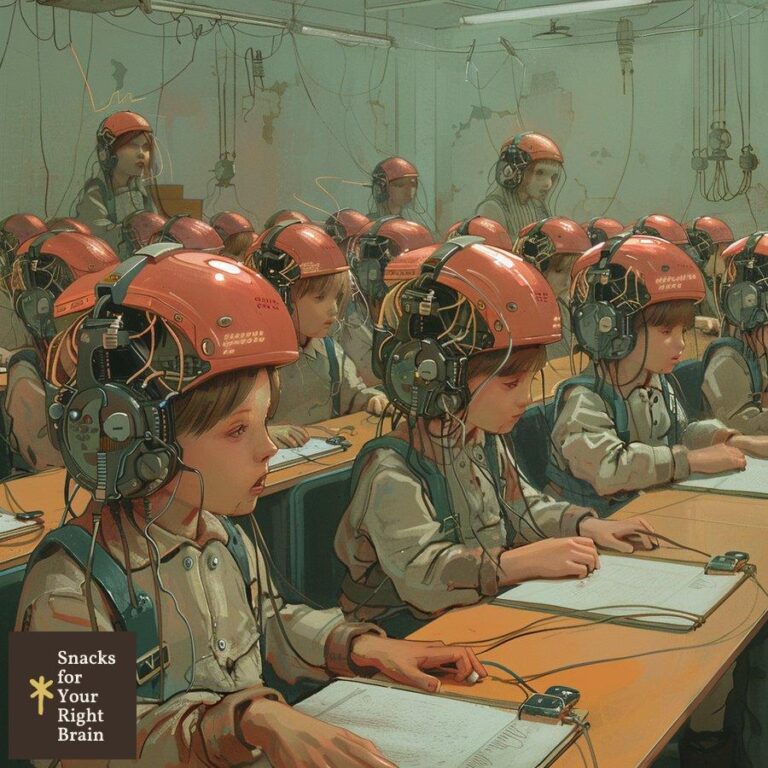Why Is the Setting Important to the Storyline
The setting of a story serves as the foundation upon which all other elements are built. It is the backdrop against which characters come to life, plots unfold, and themes emerge. Far from being a mere static element, setting plays a dynamic and integral role in storytelling, shaping the narrative in profound ways. This article delves into the multifaceted importance of setting in literature, exploring how it functions as a character, establishes mood, influences character development, drives plot and conflict, enhances themes and symbolism, creates immersion, varies across genres, and impacts reader engagement.
How does setting function as a character in storytelling?
Setting can transcend its role as a backdrop and become a living, breathing entity within a story. When crafted skillfully, the setting takes on characteristics typically associated with human characters, influencing the narrative, interacting with other characters, and even undergoing its own arc of change.

Personification of Setting
Authors often employ personification to imbue settings with human-like qualities. This technique breathes life into landscapes, cities, or even individual buildings. For example, in Thomas Hardy’s “The Return of the Native,” Egdon Heath is described as having a face, suggesting it possesses its own personality and agency. The heath becomes a brooding presence that shapes the lives of the human characters, much like another character would.
Setting as an Antagonist
In some stories, the setting itself becomes the primary source of conflict, effectively functioning as the antagonist. Jack London’s “To Build a Fire” exemplifies this, where the harsh, unforgiving Yukon wilderness pits itself against the protagonist. The extreme cold and isolation become active forces working against the main character, creating tension and driving the plot forward.
Setting’s Influence on Character Decisions
Just as human characters influence each other’s choices, a well-developed setting can sway characters’ decisions and actions. In Emily Brontë’s “Wuthering Heights,” the wild and untamed moors mirror and influence the passionate nature of the characters, particularly Heathcliff and Catherine. Their decisions are often shaped by the rugged, isolated environment in which they live.
Setting’s Evolution
Like characters, settings can undergo transformation throughout a story. This evolution can parallel or contrast with the development of human characters. In Gabriel García Márquez’s “One Hundred Years of Solitude,” the town of Macondo changes dramatically over the course of the novel, reflecting the family’s journey and the broader themes of progress and decay.
Emotional Resonance of Setting
Settings can evoke emotional responses both in characters and readers, much like a compelling character would. The way characters interact with and perceive their environment can reveal much about their inner states. For instance, in Virginia Woolf’s “Mrs. Dalloway,” the bustling streets of London reflect and amplify Clarissa Dalloway’s internal excitement and anxiety as she prepares for her party.
Setting as a Reflection of Characters
Sometimes, the setting serves as a mirror or extension of the characters themselves. This technique allows authors to externalize internal traits or conflicts. In F. Scott Fitzgerald’s “The Great Gatsby,” the contrast between the opulent West Egg and the industrial “valley of ashes” reflects the moral decay hidden beneath the glittering facade of the characters’ lives.
By treating setting as a character, authors create a richer, more immersive narrative experience. This approach adds depth to the story, allowing the environment to actively participate in the unfolding drama rather than serving as a passive backdrop. As readers, we become more deeply invested in the world of the story, experiencing it as a living, dynamic entity that shapes and is shaped by the events and characters within it.
In what ways does setting establish mood and atmosphere?
![]()
The setting of a story is a powerful tool for establishing and maintaining the mood and atmosphere throughout the narrative. It creates the emotional landscape that characters and readers navigate, influencing how events are perceived and experienced. Let’s explore the various ways in which setting contributes to the mood and atmosphere of a story.
Visual Imagery
The visual elements of a setting play a crucial role in setting the tone. Descriptions of landscapes, architecture, lighting, and colors all contribute to the overall mood. For example, a story set in a fog-shrouded Victorian London immediately evokes a sense of mystery and foreboding, as seen in Arthur Conan Doyle’s Sherlock Holmes stories. Conversely, a sun-drenched beach setting might create a mood of relaxation or adventure, depending on how it’s described.
Sensory Details
Effective settings engage multiple senses, not just sight. The sounds, smells, textures, and even tastes associated with a place can dramatically influence the atmosphere. In Patrick Süskind’s “Perfume,” the olfactory descriptions of 18th-century Paris create a visceral, often unsettling atmosphere that permeates the entire novel.
Weather and Climate
Weather conditions and climate are powerful mood-setters. A torrential rainstorm can create tension and foreboding, while a gentle spring breeze might evoke feelings of hope and renewal. In Ernest Hemingway’s “The Old Man and the Sea,” the relentless sun and vast ocean underscore the protagonist’s isolation and struggle.
Time of Day
The time of day in which scenes are set can significantly impact the mood. Nighttime often brings an air of mystery or danger, while daybreak might symbolize hope or new beginnings. In Bram Stoker’s “Dracula,” the contrast between day and night settings heightens the sense of supernatural threat.
Historical and Cultural Context
The historical period and cultural setting of a story contribute greatly to its atmosphere. A tale set in Renaissance Italy will have a vastly different feel from one set in the American Wild West or futuristic Mars. The social norms, technology, and cultural practices of a given setting all influence how readers perceive and feel about the story world.
Natural vs. Man-made Environments
The distinction between natural and man-made settings can create different atmospheric effects. A dense forest might evoke feelings of mystery or primal fear, while a sprawling cityscape could create a sense of alienation or excitement. In John Steinbeck’s “The Grapes of Wrath,” the contrast between the dust bowl farmlands and the promised land of California creates a palpable atmosphere of desperation and hope.
Scale and Perspective
The scale of the setting and how it’s presented can influence mood. Vast, open spaces might create a sense of freedom or insignificance, while claustrophobic settings can induce anxiety or intimacy. In Charlotte Brontë’s “Jane Eyre,” the imposing Thornfield Hall creates an atmosphere of secrets and confinement.
Symbolic Elements
Objects, landmarks, or natural features within a setting can serve as powerful symbols that contribute to the overall mood. In F. Scott Fitzgerald’s “The Great Gatsby,” the green light at the end of Daisy’s dock symbolizes Gatsby’s hopes and dreams, adding to the atmosphere of longing and nostalgia that permeates the novel.
Contrast and Juxtaposition
Authors often use contrasting settings to heighten emotional impact. Moving from a cheerful, bright setting to a dark, oppressive one can create a jarring effect that amplifies the mood shift. This technique is often used in horror and thriller genres to build tension.
Familiarity vs. Unfamiliarity
The degree to which a setting is familiar or foreign to the characters (and by extension, the readers) can greatly influence the mood. Familiar settings might evoke comfort or nostalgia, while unfamiliar ones can create excitement or unease. In H.P. Lovecraft’s works, the use of unknown, cosmic settings creates an atmosphere of existential dread and insignificance.
By skillfully manipulating these aspects of setting, authors can create a pervasive mood and atmosphere that envelops the reader, making the story world feel alive and emotionally resonant. The setting becomes not just a place where events occur, but an integral part of how those events are experienced and interpreted by both characters and readers.
How does setting influence character development?

The setting of a story plays a significant role in shaping and developing characters. It provides the context in which characters grow, change, and reveal their true natures. The environment in which characters exist can challenge them, comfort them, or force them to adapt, all of which contribute to their development throughout the narrative.
Environmental Challenges
Settings often present characters with unique challenges that test their abilities and resolve. These challenges can be physical, emotional, or psychological, pushing characters to grow and evolve. For instance, in Jack London’s “The Call of the Wild,” the harsh Alaskan wilderness forces the domesticated dog Buck to tap into his primal instincts, fundamentally changing his character.
Cultural and Social Norms
The cultural and social context of a setting greatly influences character behavior and development. Characters may struggle against or conform to the norms of their environment, shaping their personalities and choices. In Jane Austen’s “Pride and Prejudice,” the social expectations of Regency-era England play a crucial role in the development of Elizabeth Bennet’s character as she navigates societal pressures and her own desires.
Opportunities and Limitations
Settings can provide characters with unique opportunities or impose limitations that shape their aspirations and actions. A character in a small, rural town might dream of escaping to the big city, while a character in an urban setting might long for a simpler life. These desires, born from the setting, drive character development. In John Steinbeck’s “The Pearl,” the impoverished coastal setting of La Paz shapes Kino’s desperate desire for wealth and the tragic consequences that follow.
Psychological Impact
The environment in which characters live can have profound psychological effects, influencing their worldview, fears, and motivations. A character raised in a war-torn country will likely develop a different outlook on life compared to one raised in peaceful suburbia. In Joseph Conrad’s “Heart of Darkness,” the oppressive jungle setting gradually erodes Kurtz’s sanity and moral compass.
Relationships and Interactions
Settings determine the types of people characters encounter and the nature of their interactions. Urban settings might lead to diverse social interactions, while isolated settings could intensify relationships between a limited cast of characters. In Emily Brontë’s “Wuthering Heights,” the isolated moor setting intensifies the passionate and destructive relationship between Heathcliff and Catherine.
Personal History and Memory
Characters often have a history with their settings, which can influence their present actions and future development. Returning to a childhood home or revisiting a place of past trauma can trigger significant character growth or revelation. In F. Scott Fitzgerald’s “The Great Gatsby,” Jay Gatsby’s obsession with his past in Louisville drives his actions and ultimately shapes his fate.
Adaptation and Resilience
Characters often must adapt to new or changing settings, which can reveal and develop aspects of their personality. This process of adaptation can showcase a character’s resilience, flexibility, or stubbornness. In Daniel Defoe’s “Robinson Crusoe,” the protagonist’s ability to adapt to life on a deserted island reveals and develops his resourcefulness and determination.
Contrast with Character
Sometimes, the setting serves as a foil to a character’s nature, highlighting their unique traits. A gentle character in a harsh environment, or vice versa, can create interesting tensions that drive character development. In Oscar Wilde’s “The Picture of Dorian Gray,” the decadent and morally corrupt London society contrasts with and ultimately corrupts Dorian’s initial innocence.
Symbolic Landscapes
Settings can serve as external representations of a character’s internal state, with changes in the environment mirroring the character’s development. In Charlotte Brontë’s “Jane Eyre,” the various settings Jane encounters – from the oppressive Lowood School to the mysterious Thornfield Hall – reflect her emotional and moral journey.
Goals and Motivations
The setting often shapes characters’ goals and motivations, which in turn drive their development. A character’s desire to escape their current environment, protect their homeland, or explore unknown territories can be a powerful force for growth and change. In J.R.R. Tolkien’s “The Hobbit,” Bilbo Baggins’ journey from the comfortable Shire to the dangerous wilds of Middle-earth drives his transformation from a timid homebody to a courageous adventurer.
By understanding and leveraging these aspects of setting, authors can create rich, dynamic characters whose development is intimately tied to the world they inhabit. The setting becomes not just a backdrop, but an active force in shaping the characters’ journeys, making their growth feel organic and believable within the context of the story world.
Why is setting crucial for driving plot and conflict?
Setting plays a vital role in driving plot and conflict in storytelling. It provides the framework within which the story unfolds, often serving as a catalyst for events and a source of tension. The importance of setting in plot development and conflict generation cannot be overstated, as it influences character motivations, creates obstacles, and shapes the overall trajectory of the narrative.

Source of External Conflict
Setting frequently serves as a direct source of external conflict for characters. This can manifest in various ways:
-
Natural Challenges: In survival stories or adventure narratives, the physical environment often poses significant threats. For example, in Jon Krakauer’s “Into Thin Air,” the extreme conditions on Mount Everest create life-threatening situations that drive the plot forward.
-
Societal Pressures: The social or political climate of a setting can generate conflict. In Margaret Atwood’s “The Handmaid’s Tale,” the dystopian society of Gilead is the primary source of conflict for the protagonist, Offred.
-
Historical Events: Real or fictional historical events tied to a specific setting can create conflict that propels the story. James Clavell’s “Shogun” uses the complex political landscape of feudal Japan as a backdrop for the main character’s struggles.
Catalyst for Character Actions
The setting often motivates characters to take specific actions, which in turn drive the plot:
-
Desire for Change: Characters may be driven to action by a desire to escape or change their current setting. In John Steinbeck’s “The Grapes of Wrath,” the Dust Bowl setting motivates the Joad family to embark on their journey to California.
-
Adaptation Necessities: Characters might need to adapt to new or changing settings, leading to plot developments. Daniel Defoe’s “Robinson Crusoe” is centered around the protagonist’s efforts to survive and adapt to life on a deserted island.
Limiting Factors and Obstacles
Settings can impose limitations or create obstacles that characters must overcome, adding complexity to the plot:
-
Physical Barriers: Geographical features or man-made structures can create physical challenges. In J.R.R. Tolkien’s “The Lord of the Rings,” the diverse and often treacherous landscapes of Middle-earth present constant challenges to the characters’ quest.
-
Social Constraints: Societal norms or laws specific to a setting can restrict characters’ actions. Jane Austen’s novels often feature conflicts arising from the social constraints of Regency-era England.
Time Pressure
The temporal aspect of setting can create urgency and drive the plot forward:
-
Deadlines: Settings with inherent time limits can add tension to the story. In Andy Weir’s “The Martian,” the protagonist’s limited resources on Mars create a race against time for survival and rescue.
-
Historical Moments: Placing a story at a critical historical juncture can create natural plot points and conflicts. Michael Shaara’s “The Killer Angels” uses the setting of the Battle of Gettysburg to structure its plot and conflicts.
Mood and Atmosphere
The atmosphere created by the setting can influence characters’ emotional states and decision-making, affecting plot development:
-
Psychological Pressure: Oppressive or claustrophobic settings can lead to psychological strain on characters, influencing their actions. Stephen King’s “The Shining” uses the isolated and haunted Overlook Hotel to gradually erode the protagonist’s sanity.
-
Emotional Resonance: Settings that evoke strong emotions can motivate character actions and reactions. In Emily Brontë’s “Wuthering Heights,” the wild and isolated moor setting amplifies the characters’ passionate and often destructive behaviors.
Revealing Character
Settings can reveal aspects of characters’ personalities or backstories, which in turn influence their actions and the plot:
-
Character-Setting Interaction: How characters respond to their environment can reveal their nature and drive plot developments. In Joseph Conrad’s “Heart of Darkness,” Kurtz’s response to the African jungle setting reveals his moral decay and drives the narrative’s exploration of colonialism.
-
Past Influences: Settings associated with characters’ pasts can trigger memories or behaviors that influence the plot. In F. Scott Fitzgerald’s “The Great Gatsby,” the settings of West Egg and the Buchanan’s house are constant reminders of Gatsby’s past and unrequited love, driving his actions throughout the story.
Symbolic Significance
Settings with symbolic meanings can add depth to conflicts and plot developments:
-
Metaphorical Landscapes: Settings that serve as metaphors for larger themes can create layered conflicts. In Cormac McCarthy’s “The Road,” the post-apocalyptic landscape serves as a metaphor for moral desolation, deepening the conflict between survival and maintaining humanity.
-
Contrasting Environments: Juxtaposing different settings can highlight conflicts and drive plot development. The contrast between the technologically advanced Capitol and the impoverished Districts in Suzanne Collins’ “The Hunger Games” underscores the central conflict of the series.




